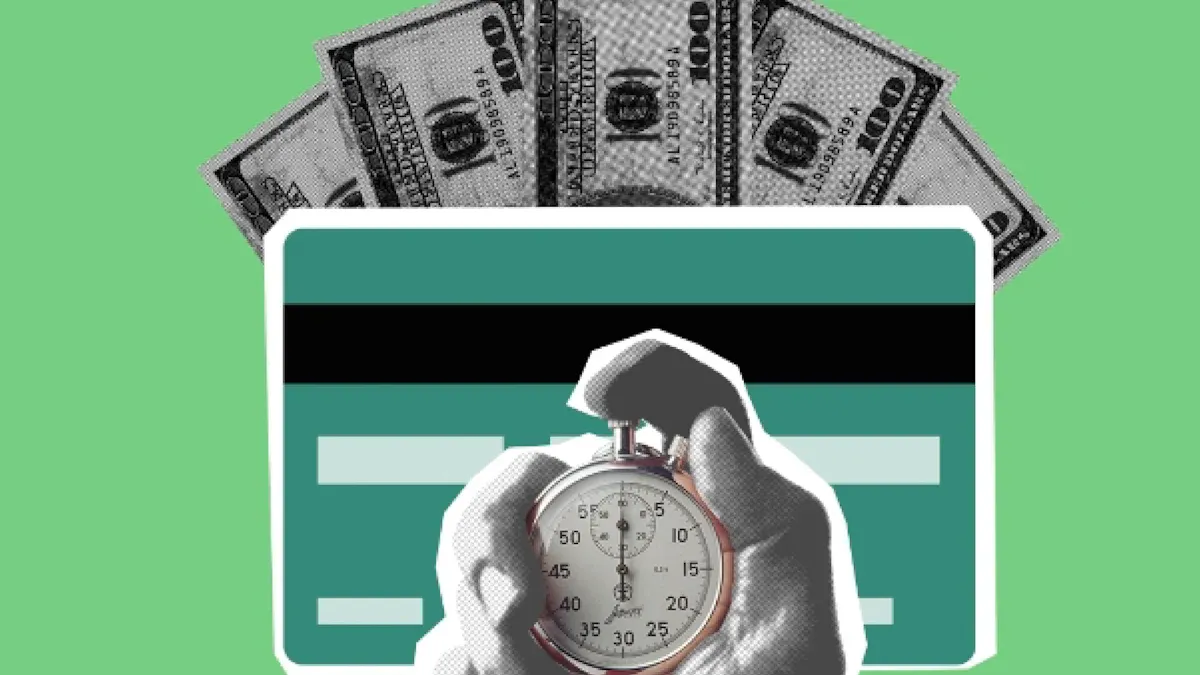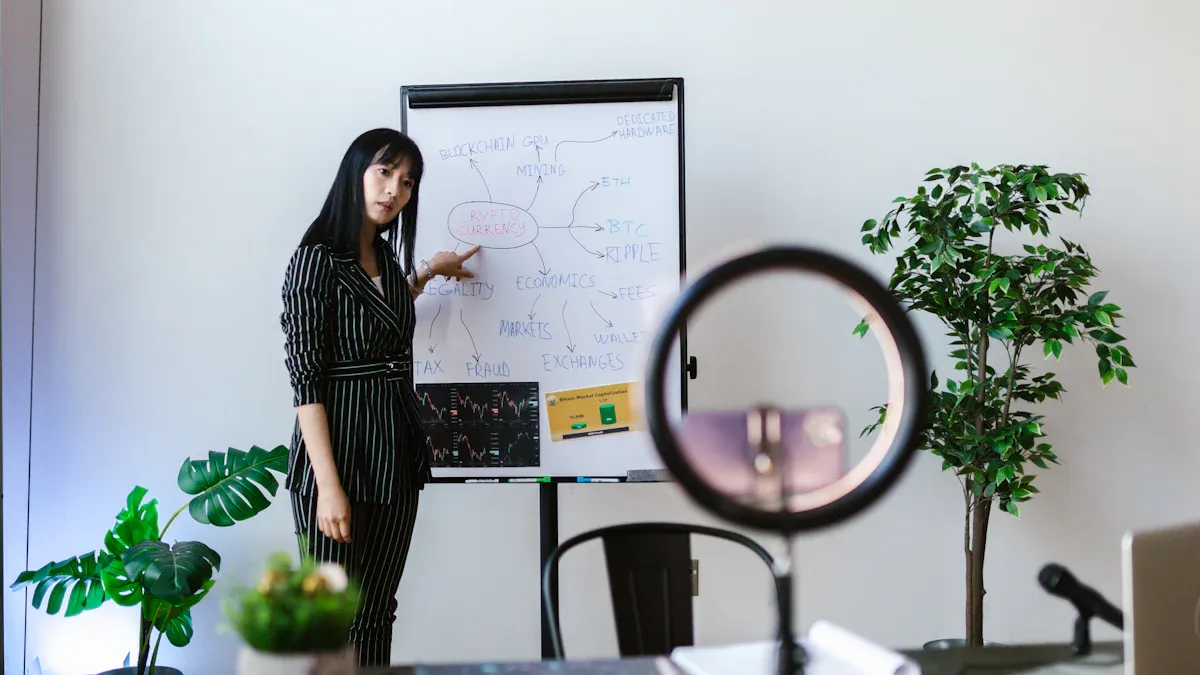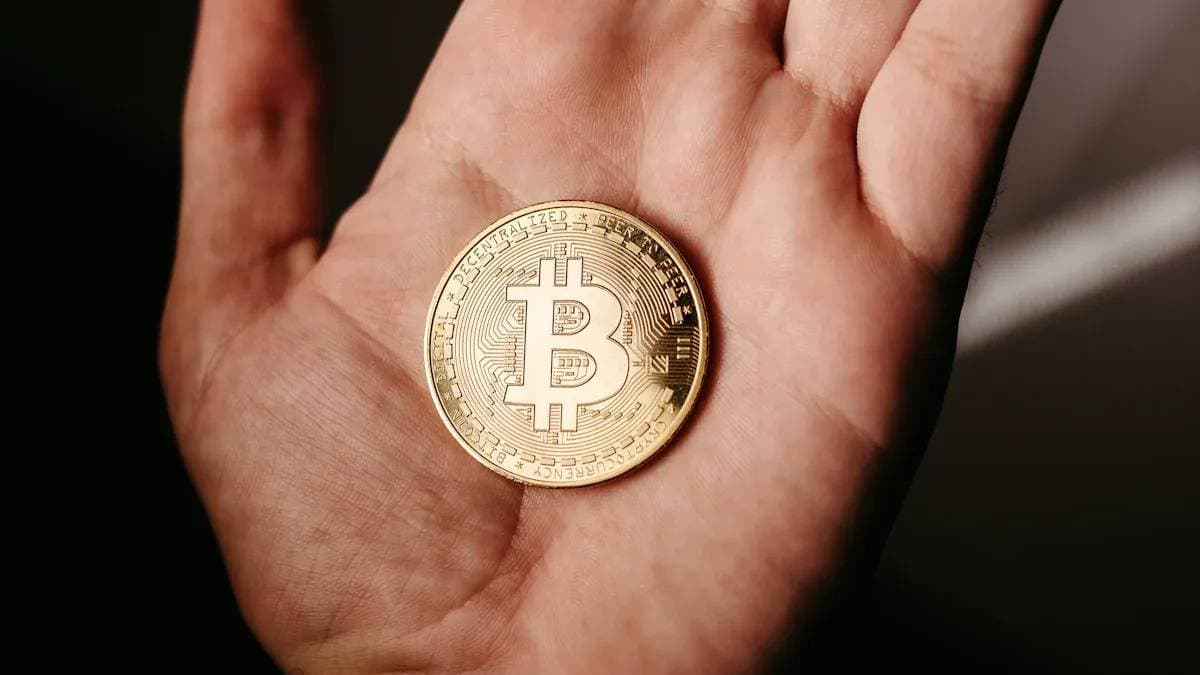- EasyCard
- Trade
- Help
- Announcement
- Academy
- SWIFT Code
- Iban Number
- Referral
- Customer Service
- Blog
- Creator
2025 Guide to Remitting to Bangladesh Using Stablecoins

Image Source: pexels
You can purchase USDT through cryptocurrency exchanges (such as Binance or OKX), then sell it via P2P trading to directly exchange it for Bangladeshi Taka (BDT) and transfer it to the recipient’s bKash or Nagad account. Although some traditional services like Western Union remittance offer 0 USD transfer fees for new customers, the funds still take 3 to 5 business days to arrive.
The core advantage of remitting with stablecoins is: extremely low fees, better exchange rates, and funds typically arriving within an hour.
This method is becoming increasingly feasible in Bangladesh, as the country already has over 3.1 million cryptocurrency users, providing a solid foundation for P2P trading.
Key Points
- Remitting to Bangladesh using stablecoins offers low fees, good exchange rates, and fast arrival, usually completed within an hour.
- Before remitting, you need to prepare a cryptocurrency exchange account and the recipient’s bKash or Nagad account.
- The remittance process includes purchasing USDT, transferring it to the funding account, and then selling USDT in the P2P market to exchange for Bangladeshi Taka.
- The most important point is: only release USDT after the recipient confirms receipt of the money to prevent fraud.
- Please note that cryptocurrency trading is currently prohibited in Bangladesh, and using this method carries legal risks.
Preparation Before Remittance: Accounts and Tools
Before starting the remittance, you need to prepare some necessary digital accounts and tools. This process is very simple and can be set up in just a few minutes.
Required Accounts Checklist
To successfully complete the remittance, both you and the recipient need to have specific accounts.
- Your account: An account on a mainstream cryptocurrency exchange. You can choose globally renowned platforms like Binance or OKX and complete identity verification.
- Recipient’s account: A local mobile financial service (MFS) account in Bangladesh. This is key to receiving Bangladeshi Taka (BDT). The most mainstream options include:
- bKash: The market leader with over 70 million users, it is the most popular mobile wallet in Bangladesh.
- Nagad: Government-backed with rapid user growth, it is another reliable receiving tool.
- Rocket (DBBL): Closely integrated with the banking system and equally popular.
Understanding Key Concepts: USDT and P2P
You will encounter two core concepts: USDT and P2P. Understanding them will make you more confident in operating.
USDT (Tether) is a cryptocurrency pegged 1:1 to the US dollar, also known as a “stablecoin.” Its market cap exceeds $180 billion, with huge daily trading volume, high stability, making it an ideal medium for global remittances.
P2P (Peer-to-Peer) trading is a direct person-to-person trading model.
In the exchange’s P2P market, you act as a seller. You directly sell your held USDT to buyers in Bangladesh, who pay the equivalent Bangladeshi Taka to your recipient via bKash or Nagad.
Why Choose the TRC-20 Network
When withdrawing USDT from the exchange, you need to select a transfer network. We strongly recommend using the TRC-20 network.
The reason for choosing it is its extremely high cost-effectiveness. The TRC-20 network is not only fast but also has extremely low transfer fees. In contrast, another common network, ERC-20 (based on Ethereum), has much higher fees.
| Network Type | Average Transfer Fee (USD) | Average Arrival Time |
|---|---|---|
| TRC-20 (Recommended) | Usually less than $1 | Less than 1 minute |
| ERC-20 | About $1.15, possibly higher during peak times | Several minutes |
For small or frequent remittances, choosing TRC-20 can save you a significant amount in fees annually.
Remitting with Stablecoins: Four-Step Operation Guide
Now, you have prepared all the accounts. The following four steps will guide you through the entire remittance process. This process is very intuitive, and even for first-time operators, you can easily master it. Let’s start your journey of remitting with stablecoins for the first time.
Step One: Purchase USDT
Your first step is to acquire the “fuel” for remittance on the cryptocurrency exchange—USDT.
Before you can purchase any cryptocurrency, you need to complete the platform’s identity verification (KYC) process. This is a standard compliance step designed to protect the fund security of all users. It usually includes:
- Submit basic information: Provide personal details such as your name, address, and date of birth.
- Verify identity documents: Upload an officially issued identity proof, such as a passport or driver’s license. The platform will use it to verify your identity.
- Risk assessment: The system will automatically assess based on the information you provide to prevent financial risks.
- Wait for review: After submission, it usually takes just a few minutes to a few hours for your account to be verified.
After successful account verification, you can purchase USDT. Mainstream exchanges provide multiple convenient payment methods for this. Taking OKX as an example, you can choose:
- Credit card
- Debit card
- Bank transfer
- Apple Pay
- Google Pay
Operation Tip: If this is your first operation, it is recommended to start with a small amount (for example, $50-$100). This can help you familiarize yourself with the entire process in a stress-free environment and build operational confidence.
Step Two: Withdraw USDT
After a successful purchase, USDT will be stored in your exchange’s “spot account” or similar overview account. To conduct P2P trading, you need to transfer this USDT to the “funding account” or “P2P account.” This operation is an internal fund transfer within the exchange, completely free and instant.
The operation steps are as follows:
- Enter your exchange’s “assets” or “wallet” page.
- Find the “transfer” function.
- Transfer funds from the “spot account” to the “funding account” (or P2P account).
- Select the currency as
USDTand enter the amount you wish to use for trading. - Confirm the transfer.
Importance of Network Selection: Although this step is only an internal transfer on the platform, it familiarizes you with the concept of “network selection.” When you need to withdraw from one platform to another in the future, be sure to select the TRC-20 network, as it ensures your transfer fee is less than $1 and arrives quickly.
Step Three: P2P Sell USDT for BDT
This is the core part of the entire stablecoin remittance process. Here, you will “sell” USDT to buyers in Bangladesh, who will directly pay Bangladeshi Taka (BDT) to your recipient.
- Enter the P2P Market: Find the “P2P Trading” or “C2C Trading” entrance on the exchange homepage.
- Set Trading Parameters:
- Select the “Sell” option.
- Select the cryptocurrency to sell:
USDT. - Select the fiat currency:
BDT.
- Screen Buyers: You will see a list containing many buyer ads. A reliable buyer typically has the following characteristics:
- High Completion Rate: Look for buyers with a completion rate above 98%.
- Large Number of Completed Orders: The more completed orders, the more experienced they are.
- Supported Payment Methods: Ensure they support
bKashorNagad.
- Initiate Sell Order: Select a suitable buyer and click “Sell.” Enter the amount of USDT you want to sell, and the system will automatically calculate the BDT amount your recipient will receive. Then, select or add the recipient’s bKash/Nagad account information.
Step Four: Confirm Receipt and Release
This is the final step to secure your funds and the most critical one. Strictly follow the golden rule of “confirm receipt first, then release tokens.”
- Wait for Buyer Payment: After you submit the order, the buyer has a certain time (usually 15 minutes) to complete the payment. After payment, they will mark the order as “I have paid.”
- Verify Fund Arrival:
- Key Step: Immediately contact your recipient in Bangladesh and ask them to personally log into the bKash or Nagad mobile app to check the account balance and confirm whether this payment has indeed arrived.
- Verify Confirmation Information: A successful bKash transaction will display
✅ Payment successful!, while Nagad’s successful transaction status code isstatus: "Success". - Security Warning: Never trust any payment screenshots or SMS notifications sent by the buyer. These are easily forged. The only confirmation standard is the actual money received in the recipient’s account.
- Release USDT: After you are 100% sure the recipient has received the full amount, return to the exchange’s order page and click the “Confirm Receipt and Release” button. The system will require you to perform security verification (such as entering a verification code), after which your held USDT will be sent to the buyer.
- Transaction Complete: At this point, the entire remittance process is successfully completed.
What to Do If Problems Arise? If the buyer marks payment as made but your recipient does not receive the money for a long time, do not panic. First, communicate with the other party through the order chat box. If communication is ineffective, immediately click the “Appeal” button. Platform customer service will intervene within 24 to 48 hours and make a ruling based on evidence provided by both parties (such as your recipient’s account flow), to protect your asset security.
Cost and Efficiency: Saving Money and Time is Key

Image Source: pexels
When choosing a remittance method, cost and speed are the two most important considerations. Next, we will analyze in detail why remitting with stablecoins has overwhelming advantages in both aspects.
Total Remittance Cost Composition
When you use USDT for remittance, the total cost is very transparent, mainly composed of the following parts:
- USDT Purchase Spread: When you buy USDT with fiat currency on the exchange, the price will be slightly higher than the market price. This spread is usually very small.
- Withdrawal Network Fee: This is the main transfer cost. As mentioned earlier, choosing the TRC-20 network, this fee is usually less than 1 dollar.
- P2P Trading Spread: When selling USDT in the P2P market, there will also be a slight exchange rate spread. However, due to fierce market competition, this spread is also very small.
Overall, your total cost is mainly the slight spreads from two transactions plus a network fee of less than 1 dollar, with an extremely low overall fee rate.
Cost Comparison: USDT vs Traditional Methods
To give you a more intuitive feel for the cost difference, let’s look at a direct comparison. Traditional methods not only charge fixed fees but also hide additional costs in the exchange rate.
| Item | USDT Remittance | Traditional Method (Bank Wire/Remittance Company) |
|---|---|---|
| Fee Rate | As low as 0.1% | Up to 10% |
| Network/Wire Fee | Usually less than $1 | $30 - $100 |
| Total Cost | Extremely low | High |
This table clearly shows that the fees and fixed costs of traditional bank wires or remittance services add up to a considerable expense. In contrast, the total cost of USDT remittance is almost negligible.
Speed Comparison: Minutes vs Days
Time is money, especially in situations where funds are urgently needed.
Traditional international wire transfers usually take 2 to 5 business days to arrive, and the specific time may be extended due to bank processing procedures. This means your recipient needs to wait several days to receive the money.
Stablecoin remittance is almost real-time. From completing the P2P transaction to the recipient confirming receipt in bKash or Nagad, the entire process is usually completed within a few minutes to an hour, shortening the waiting time from “days” to “minutes.”
Risk Management and Secure Operations

Image Source: pexels
Although remitting with stablecoins is efficient and low-cost, you must understand and manage the risks involved. Secure operation is the cornerstone of successful remittance, and ignoring risks may lead to loss of your funds.
Identifying Main Risk Points
Before operating, you need to identify two main risks: counterparty risk and market risk.
- P2P Trading Fraud: This is the most direct risk. Dishonest counterparties may try to scam your USDT. Common fraud methods include:
| Fraud Type | Operation Method | Prevention Measures |
|---|---|---|
| Fake Receipt Fraud | The scammer sends forged payment screenshots or SMS, claiming to have paid, urging you to release USDT. | Never trust any screenshots. The only standard is the recipient personally logging into the bKash or Nagad app to confirm funds have arrived. |
| Chargeback Fraud | The other party uses certain revocable payment methods to pay, and after you release USDT, they immediately revoke or cancel the payment. | Avoid accepting unfamiliar payment methods. If in doubt about the payment method, cancel the transaction. |
- USDT De-pegging Risk: USDT’s value is pegged 1:1 to the USD, but there have been brief price fluctuations in history. For example, the 2022 UST stablecoin collapse caused market panic, leading to USDT briefly deviating from 1 dollar. Although Tether successfully handled a large number of redemption requests and restored the peg, you should be aware of the potential risks in such extreme market situations.
P2P Trading Security Checklist
Follow this checklist to maximize the security of P2P trading.
- Carefully Screen Counterparties: Prioritize buyers with verified identities, a high number of trading orders, and high completion rates. An exchange rate that seems too good to be true is usually a red flag.
- Insist on In-Platform Communication: All communication is conducted within the exchange’s chat window to serve as evidence in case of disputes.
- Verify Recipient Information: Ensure the bKash or Nagad account information you enter is completely correct.
- Confirm First, Then Release: This is the most important principle. Absolutely do not click the “Confirm Receipt and Release” button before the recipient 100% confirms receipt of the full amount.
- Make Good Use of the Appeal Function: If you encounter a problem that cannot be resolved with the other party, immediately initiate an appeal and let platform customer service intervene.
Compliance Risk Warning
This is the most important risk you must understand. As of 2025, Bangladesh’s stance on cryptocurrency is very strict.
Although owning cryptocurrency itself is not explicitly defined as a crime, according to the 1947 Foreign Exchange Management Act and the 2012 Anti-Money Laundering Act, conducting cryptocurrency transactions is effectively prohibited. The Bangladesh Bank (central bank) has issued multiple warnings.
“Transactions conducted through online networks involving cryptocurrency are not approved by any central payment system, so people may suffer economic losses and face legal consequences. In this case, citizens have been requested to avoid conducting, assisting, and promoting all transactions through virtual currencies such as Bitcoin to avoid economic and legal damages.”
This means that although remitting to Bangladesh with stablecoins is technically feasible, both you and your recipient need to clearly recognize the local legal risks.
For those pursuing low cost and high efficiency, using USDT to remit to Bangladesh is undoubtedly a highly attractive modern solution. It is not just technology but also to “sustain livelihoods.”
As observer Ray Youssef said, families are remitting cross-border, and women no longer need to queue for hours enduring high fees. Users are turning to cryptocurrency to solve problems that traditional finance has failed to address for decades.
The key to success lies in two points: choosing a reputable platform and strictly adhering to the security principle of “confirm receipt first, then release tokens.” After fully understanding the process and risks, feel free to start with a small remittance to personally experience the convenience of this new method.
FAQ
Is there a minimum amount limit for remittance?
P2P market limits vary. You can find buyers who accept orders as low as $10-$20. For your first operation, it is recommended to start with a small amount to familiarize yourself with the process.
Is it legal to receive cryptocurrency in Bangladesh?
Important Note: It is not legal. The Bangladesh Central Bank prohibits cryptocurrency transactions. Although technically feasible, both you and the recipient need to clearly recognize the local legal risks. Operate with caution.
What if the buyer marks payment as made but I haven’t received the money?
First, do not release your USDT. Then, immediately click the “Appeal” button on the order page. Platform customer service will intervene in the investigation and make a ruling based on evidence to protect your asset security.
Do I need a separate crypto wallet?
No need. For the process described in this guide, you only need to use the exchange’s built-in funding account to complete all operations. This simplifies the steps and is very friendly for beginners.
*This article is provided for general information purposes and does not constitute legal, tax or other professional advice from BiyaPay or its subsidiaries and its affiliates, and it is not intended as a substitute for obtaining advice from a financial advisor or any other professional.
We make no representations, warranties or warranties, express or implied, as to the accuracy, completeness or timeliness of the contents of this publication.




Contact Us
Company and Team
BiyaPay Products
Customer Services
BIYA GLOBAL LLC is a licensed entity registered with the U.S. Securities and Exchange Commission (SEC No.: 802-127417); a certified member of the Financial Industry Regulatory Authority (FINRA) (Central Registration Depository CRD No.: 325027); regulated by the Financial Industry Regulatory Authority (FINRA) and the U.S. Securities and Exchange Commission (SEC).
BIYA GLOBAL LLC is registered with the Financial Crimes Enforcement Network (FinCEN), an agency under the U.S. Department of the Treasury, as a Money Services Business (MSB), with registration number 31000218637349, and regulated by the Financial Crimes Enforcement Network (FinCEN).
BIYA GLOBAL LIMITED is a registered Financial Service Provider (FSP) in New Zealand, with registration number FSP1007221, and is also a registered member of the Financial Services Complaints Limited (FSCL), an independent dispute resolution scheme in New Zealand.




















